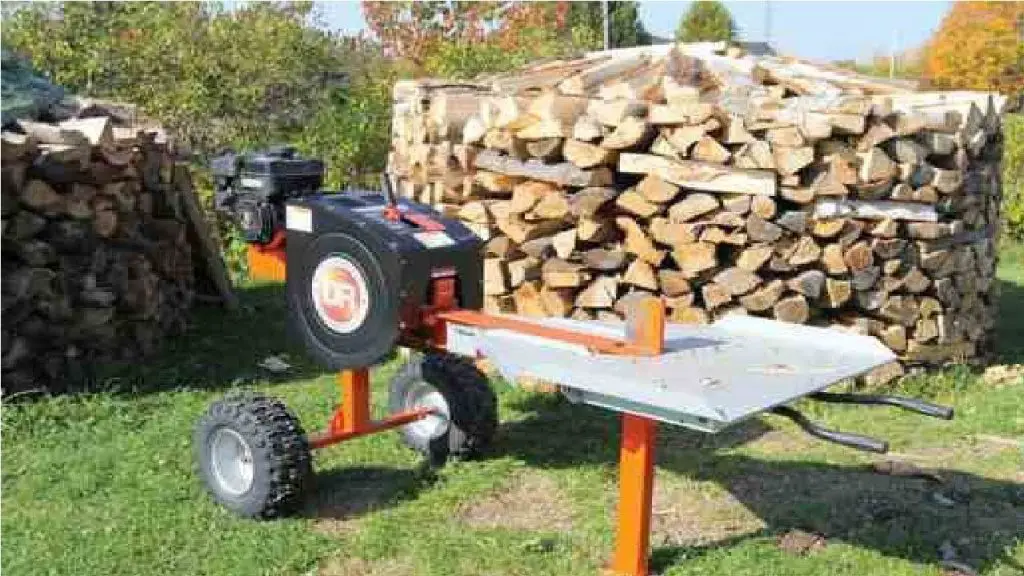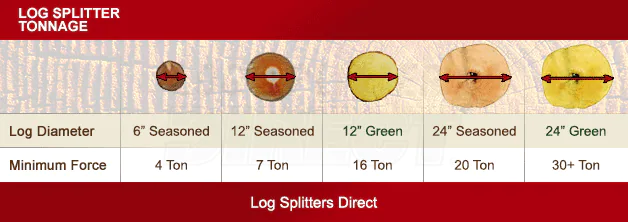A log splitter is beneficial if you frequently process large quantities of firewood or have limited physical abilities. For occasional firewood needs or if you enjoy the manual process, using an axe or maul is sufficient. Assess your firewood demands and personal preferences before investing in a log splitter.
A log splitter is an excellent investment for those who want to make their winter wood cutting duties easier. A log splitter will allow you to cut logs into smaller pieces of firewood more efficiently and with less effort.
The most important thing to consider when purchasing a log splitter is the power of the machine. If you have a small property or want to split logs occasionally, you might get away with lower power. However, if you have a large property or need something that can work all day, it’s best to invest in something with more power.
My quick summary is that if you meet any of these requirements, then you should get a log splitter:
- You cannot handle the physical demands of splitting your firewood by hand.
- You have more than 1 cord of firewood to split in a limited time window.
- Your firewood rounds is so large that they take more than 5 strikes of an axe to split.
- Your firewood is so dense and hard that it takes more than 5 strikes of an axe to split.
- Your available time is limited and you cannot afford to spend additional time splitting firewood by hand.
- You are mentally dreading the task of splitting your firewood by hand.
Table of Contents
3 Types of Log Splitters
The first thing to understand is that there are three main types of log splitters – manual, electric, and hydraulic.
Manual
Manual log splitters are the most common type of log splitter. They are the cheapest and easiest to use. Manual log splitters can be used in various ways, but they do not work as well on hardwood or when you need to process a lot of firewood. They can also be dangerous to use when they have sharp edges.
Electric
Electric log splitters are more expensive than manual ones but can be used for a broader range of logs, including greenwood. They still have some disadvantages – they require electricity and need to be plugged in, making them difficult to use in remote locations.
Hydraulic
Hydraulic log splitters are the most expensive type but also offer the best performance for splitting logs.
Hydraulic log splitters use hydraulic pressure to break logs into pieces. The hydraulic pressure is generated by a pump, which forces the fluid through a hose and into the ram. The ram is a long steel cylinder with a pointed metal head that can be adjusted to different lengths. The hydraulic pressure causes the ram to move up and down to hit the log with enough force to split it apart.

How Much Firewood Do You Need?
The main question I get is how much firewood you need to cut to justify a log splitter?
A log splitter is an investment, and it is natural to want to know how long it will take before you can justify the purchase. One way to answer this question is by calculating how many logs you need to cut with a splitting axe for the log splitter to pay off.
There is no set answer for this question. It depends on the size and type of log splitter you buy and the wood you are splitting.
My personal answer to this question is if you are cutting so much firewood and of such a large size that you are physically struggling, you should upgrade from a splitting axe/maul to a log splitter. Or, if you are mentally dreading the amount of splitting you need to do, consider getting a log splitter to make the job faster and easier.
Seasoned vs Green Wood
Wood is a natural material composed of cellulose fibers, which are long chains of sugars. When wood is seasoned, the cellulose fibers have been broken down by enzymes or bacteria, and the wood becomes more brittle. This means it’s easier to split because there’s less resistance.
Seasoned logs require almost half the effort, or in the case of log splitters, half the force to split. To split greenwood, you will need to get a significantly larger machine. I strongly recommend seasoning your wood sufficiently, both so that it is easier to separate but also because it burns hotter.

Hardwood vs Softwood
The answer to this question is not as clear-cut as one might think. For example, the type of wood, the type of tool used, and the moisture content of the wood all play a role in how difficult it is to split a piece of wood.
Yes, hardwood is more difficult to split than softwood, and you will need to size your log splitter accordingly.
Hardwoods are very dense and have less space between the individual fibers than softwoods, making them more difficult to break apart.
What Size Log Splitter Do I Need?
It is essential to choose the right size of log splitter for your needs. This depends on the type of wood you are splitting, how seasoned it is, and how large the logs are.
The table below shows how much power your log splitter should have for different types of wood and their size.
| Type of Wood | 6 Inch Log | 12 Inch Log | 24 Inch Log |
| Alder | 4 ton | 7 ton | 27 ton |
| Ash | 7 ton | 16 ton | 30 ton |
| Aspen | 4 ton | 7 ton | 27 ton |
| Beech | 7 ton | 16 ton | 30 ton |
| Birch | 7 ton | 16 ton | 30 ton |
| Cedar | 6 ton | 15 ton | 27 ton |
| Cherry | 6 ton | 15 ton | 27 ton |
| Cottonwood | 4 ton | 7 ton | 27 ton |
| Elm | 10 ton | 16 ton | 30 ton |
| Hickory | 10 ton | 22 ton | 30+ ton |
| Locust | 10 ton | 22 ton | 30+ ton |
| Maple | 7 ton | 16 ton | 30 ton |
| Oak | 10 ton | 22 ton | 30+ ton |
| Pine | 6 ton | 10 ton | 27 ton |
| Walnut | 7 ton | 16 ton | 30 ton |
My recommendation is that there is no harm in getting a large 30-ton machine, knowing that it will have more power than you will ever need.
What size log can a log splitter split?
This depends on the wood type and your log splitter size. A 10-ton log splitter can split almost any kind of 6-inch log. A 22-ton log splitter can split any 12-inch log. A 30-ton log splitter can split any 24-inch log. If you intend to split a log larger than 24 inches, you may want to consider preparing it first with a splitting axe and wedges.
Can a log splitter split wet logs?
Wet logs often require twice as much force as seasoned wood to split. This means you will need to select a machine with sufficient power to split greenwood. But yes, a log splitter can certainly split wet logs.
In Conclusion – Do I Need a Log Splitter?
The answer to whether or not you need a log splitter depends on your needs. Using an axe and a wedge might be cheaper if you only occasionally split logs. However, if you are splitting logs regularly, it might be worth the investment in a top quality log splitter.
